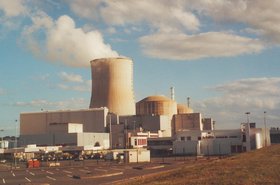Hydrogen is the "fuel of the future." It is billed as the answer to green transport and green energy for industry. But right now, we don't have the infrastructure to produce it and deliver it where it is needed.
To create a hydrogen economy, we need a hydrogen infrastructure. To build that, we need to know what we are doing this for, and we also need some definitions.
And that's where it starts getting complex.
Not a fuel?
Firstly, far from being the "fuel of the future," is hydrogen even a fuel? Not according to Popular Mechanics, which says it's merely "a way of storing or transporting energy. You have to make it before you can use it."
You can see PM's point. Pure hydrogen doesn't occur naturally (or maybe it does, but we'll get back to that). But it does have a high energy density. It holds more than 150 times more energy per kg than lithium-ion batteries and even holds three times the energy density per kilo of gasoline or diesel. It's also easy to make from water, using electricity.
So if you can make hydrogen it makes sense, as it gives you a readily storable and transportable form of energy. With that energy density, you can run vehicles on hydrogen, and you have a chance of decarbonizing transport (as well as industrial sectors like steelmaking)
That's why the US Department of Energy (DOE) announced a $7 billion plan in 2022 to create a hydrogen program, which includes an "earth shot" aiming to reduce the price of clean hydrogen to $1 per kg within one decade, making hydrogen an alternative energy source.
It's also why the EU has a clean hydrogen plan with equally big goals. It wants to produce 10 million tonnes and import another 10 million tonnes of renewable hydrogen in the EU by 2030.
But how do you make it, and how do you transport it?
Practicalities
Hydrogen is a gas, which can be consumed in turbines and fuel cells, much like natural gas. But this similarity is deceptive.
Natural gas is a fossil fuel (methane), and its molecules are large compared with hydrogen which has the smallest, lightest atoms in the periodic table.
Generators running on natural gas need to be changed if they are going to be run on hydrogen, something that firms like Rolls-Royce are already doing - and it seems to be a relatively straightforward job.
But moving hydrogen is different. It might seem obvious that the best way to move to a hydrogen infrastructure is to upgrade the natural gas infrastructure, but this isn't necessarily the right way to go.
Transporting hydrogen is different from natural gas. Put simply, it is more likely to leak slowly out of any container or pipe, and pipes designed for natural gas won't work well with pure hydrogen. This means that moves to put hydrogen into existing gas pipes sound like a dubious proposition.
Most projects, like the US Hyblend initiative, blend hydrogen with natural gas in existing pipelines, but this is difficult to do in concentrations above 20 percent, so it won't allow actual decarbonization.
In any case, the existing natural gas pipeline network doesn't match where hydrogen is needed. In areas covered by natural gas grids, the pipes go to most homes and offices for heating and cooling. But these are uses that are better decarbonized by using electricity, instead of green hydrogen.
We will end up with a smaller network of pure hydrogen pipes which go to fewer places - and in particular to industrial and infrastructure sites, as well as stations to refill hydrogen vehicles.
The spectrum
How you make hydrogen is also very significant. Ideally, it will be made by electrolysis, using water and renewable electricity - a source labeled as "green hydrogen".
But there are other sources in what is called the "hydrogen rainbow."
These include "black or brown" hydrogen, made from coal or oil - a pointless exercise from the point of view of decarbonization, or "grey" hydrogen made from natural gas, which again seems pointless as the process releases as much CO2 as burning the natural gas in the first place.
So-called "blue" hydrogen is made from methane - but with the addition of carbon capture to remove the CO2 generated. As carbon capture is still pretty theoretical, or at least in its infancy, that's not really of any interest.
If hydrogen is made from electrolysis, there are further colors, since not all electricity is renewable. Hydrogen made using electrolysis powered by nuclear energy has sometimes been called "pink" hydrogen, and it recently hit the headlines in Europe, where it has been recognized as low-carbon hydrogen in the bloc's hydrogen strategy.
A less-common source is "gold" hydrogen, which is naturally occurring hydrogen that can sometimes be found leaking from underground deposits. An Australian company, Gold Hydrogen, plans to exploit it in the Ramsay Peninsula and Kangaroo Island. No one is sure how much natural hydrogen there is, or how easy it will be to exploit, but another company is planning to create underground hydrogen. Camvita Factory says it can inject microbes and nutrients into spent oil wells, and the microbes will digest the remaining deposits of oil, creating hydrogen and CO2.
Scientists dispute Camvita's claim that this is "gold" hydrogen, as it requires human intervention to produce it. It's also not "green," as CO2 is produced alongside. It would be "blue" at best if Camvita can reliably apply carbon storage to keep the CO2 underground.
Points to watch for
When the hydrogen economy arrives, it won't be in your homes or offices, but it will be at industrial sites, in trucks and planes, and in data centers. It will be consumed in fuel cells and turbines. The vast majority will be generated from electricity.
We will be offered five percent or 20 percent hydrogen blends, but that won't be good enough for decarbonization.
And while there is such a thing as gold hydrogen, I don't think there will be a pot of gold hydrogen at the end of the hydrogen rainbow.



